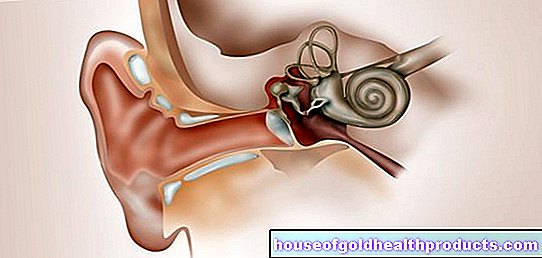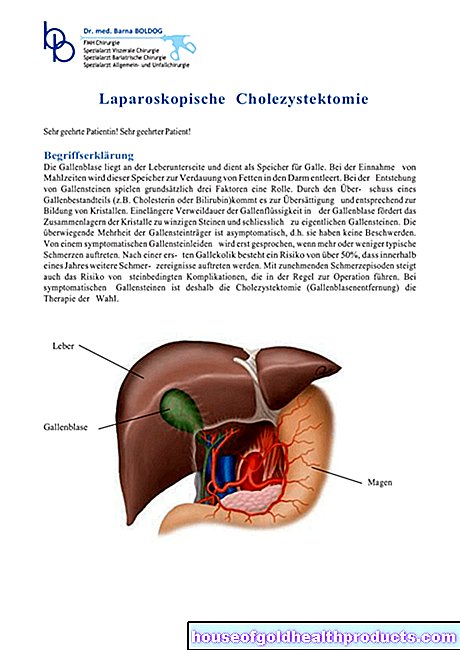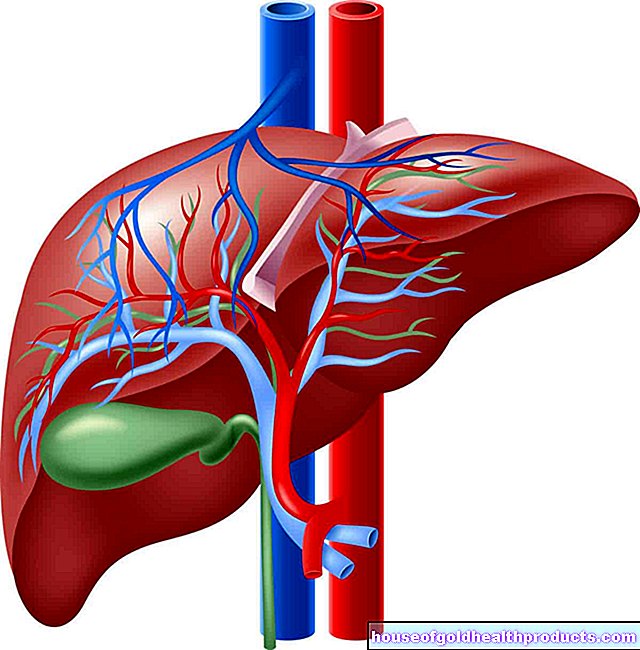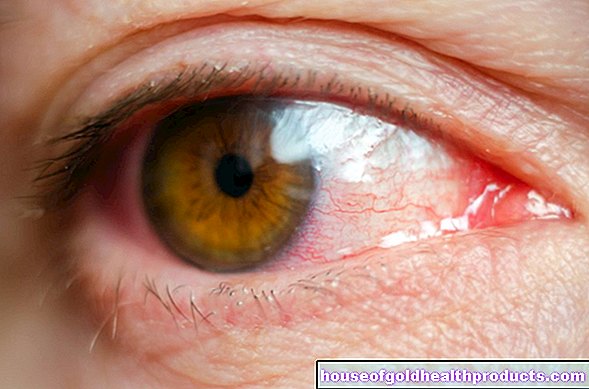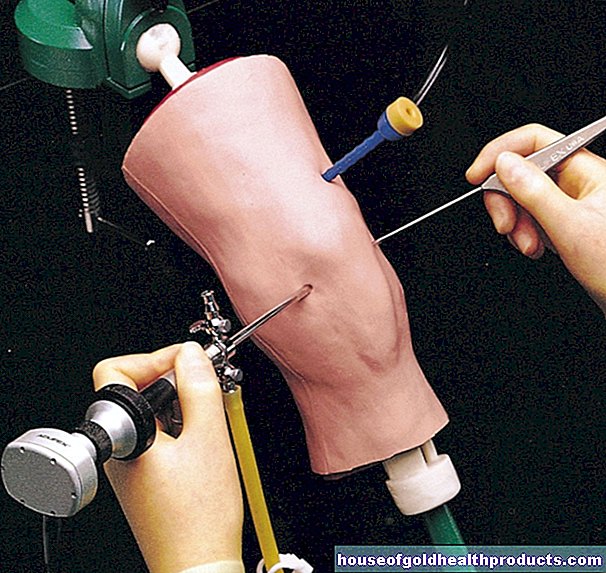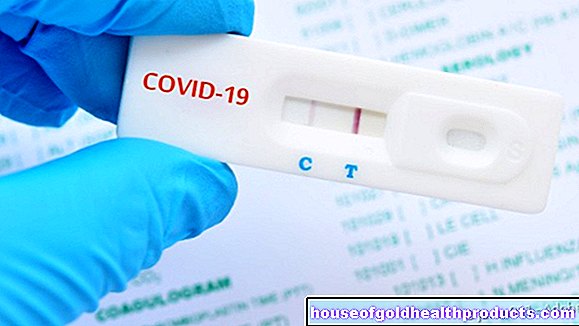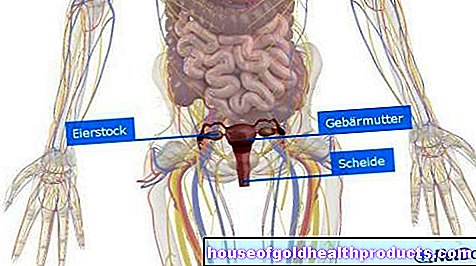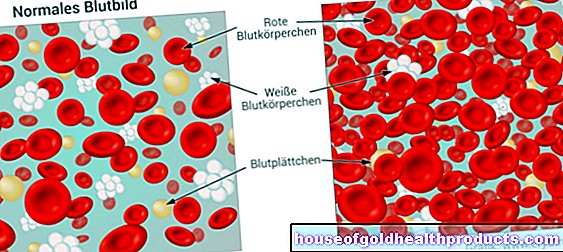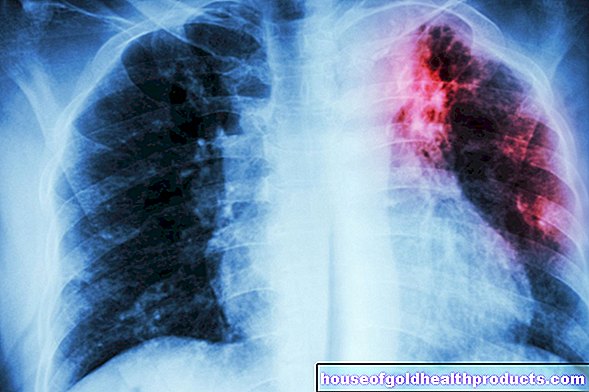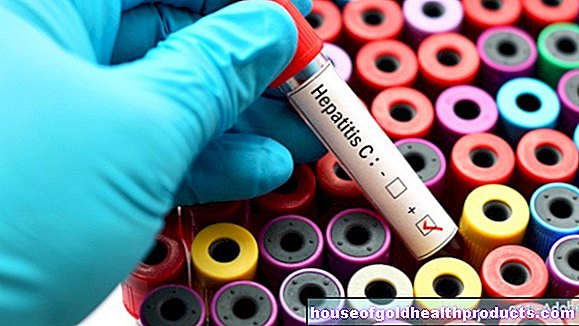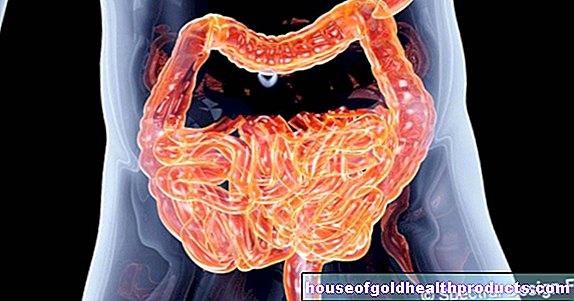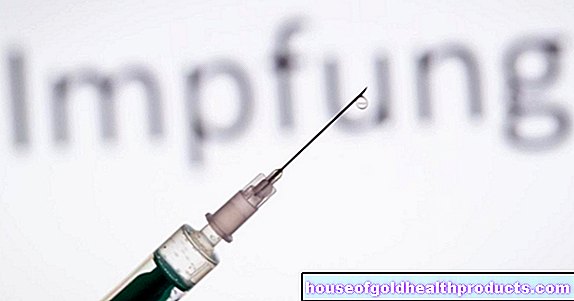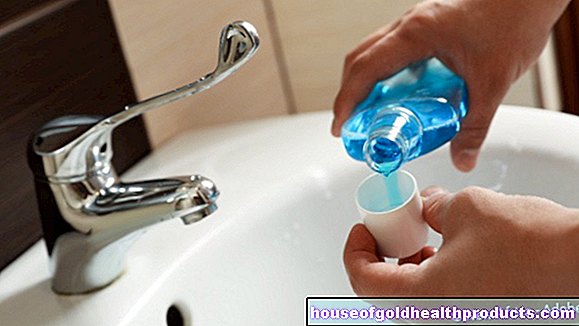Defibrillator
Carola Felchner is a freelance writer in the medical department and a certified training and nutrition advisor. She worked for various specialist magazines and online portals before becoming a freelance journalist in 2015. Before starting her internship, she studied translation and interpreting in Kempten and Munich.
More about the experts All content is checked by medical journalists.A defibrillator is designed to restore the heart's natural rhythm when someone has life-threatening arrhythmias. To do this, the device emits electrical impulses through electrodes placed on the person's chest. So-called automated external defibrillators (AED) are used in first aid. They are designed in such a way that they can also be operated by a layperson.Find out here when and how a defibrillator should be used and what needs to be considered during defibrillation.
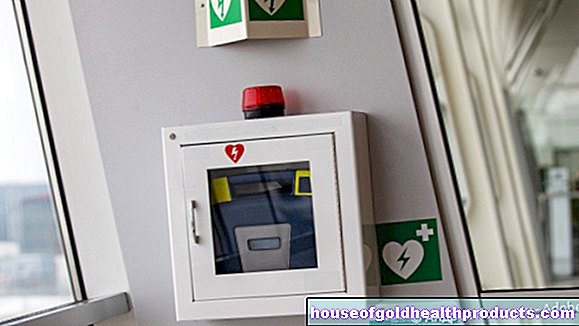
Brief overview
- What is a defibrillator? A device that emits current surges through electrodes in order to bring a disturbed heart rhythm (such as ventricular fibrillation) back into its natural rhythm.
- Using the defibrillator: Affix electrodes according to the instructions, then follow the (voice) instructions of the device.
- In what cases? As an immediate measure for life-threatening cardiac arrhythmias (such as ventricular fibrillation).
- Risks: Danger for first aiders and those affected by the flow of electricity in combination with (a lot) of water. Scorching of the chest hair if it is very dense.
Caution!
- Strictly follow the voice or written / graphical instructions of the device (AED) during defibrillation. Then in principle you cannot go wrong, even as a layperson.
- If there is a second first aider next to you, one of them will pick up the defibrillator and the other will begin manual resuscitation. If you are alone, you must start the cardiac massage immediately. If someone else comes along, ask them to look for a defibrillator.
- Do not use the defibrillator in water or in a puddle.
- Do not attach defibrillator pads (also called paddles) directly above a pacemaker (often recognizable by a scar or something similar in the chest area) or other medical implants. The electrical impulse can be impaired in such places.
- Do not touch the patient while the device is analyzing the patient's heart rhythm or applying electrical pulses. The device will prompt you accordingly.
Legally, nothing can happen to a layperson who uses a publicly accessible defibrillator for first aid. According to Section 34 of the Criminal Code, this act falls within the scope of the “justifying state of emergency” and takes place within the framework of the presumed consent of the person concerned.
How does a defibrillator work?
You can see them in companies, public buildings and subway stations: small defibrillator cases on the wall. They are marked by a green shield with a heart on which a green lightning flashes. These automated external defibrillators (AED) are somewhat reminiscent of a first-aid kit with two cables with an electrode pad the size of a postcard at each end. These electrodes are affixed to the chest when the heart is threateningly out of step. The device then uses the electrodes to deliver small electrical surges in order to bring the heart back into its natural beating rhythm.
Fully and semi-automatic defibrillators
There are fully and semi-automatic defibrillators. The former emit the current impulse automatically. The semi-automatic devices, on the other hand, ask the first aider to manually trigger the impulse at the push of a button. Semi-automatic defibrillators are mostly used in Germany.
Using a defibrillator: that's how it works!
An AED (“layman defibrillator”) is designed in such a way that it can also be used safely and purposefully by laypeople: images on the electrode pads show how and where the pads are to be attached. The device announces the next steps and their sequence via voice function. Depending on the model, there is also an image-based guide via screen or drawings.
Specifically, you proceed as follows with defibrillation:
- Uncover the patient's upper body: A defibrillator can only be used on bare skin. The skin should be dry and hair-free. This is necessary so that the defibrillator can work efficiently and the patient does not get burned from possible sparks. Therefore, if necessary, dry the skin on the upper body and shave if there is a lot of chest hair. A razor is usually included in the emergency kit for this purpose. Hurry up to shave though!
- Attach the electrode pads: Follow the instructions - one electrode is placed on the left below the armpit, the other on the right below the collarbone.
- Do not touch the patient during the analysis: the defibrillator analyzes the patient's heart rhythm and detects whether it can be shock-shocked or not (see below). Nobody should touch the patient during the analysis.
- Then follow the instructions given to you by the device: If it is a semi-automatic AED, it will ask you to press the shock button in the case of ventricular fibrillation / ventricular flutter. That triggers a surge of electricity. You can recognize the button by the lightning bolt. Caution: Neither you nor anyone else may touch the patient during the power surge!
- Continue to follow the instructions for the defibrillator: it can now ask you, for example, to resume the cardiac pressure massage that was carried out before the defibrillation.
Defibrillator: special features when used on children
Not all defibrillators are suitable for children who are younger than eight years of age or weigh less than 25 kilograms - the electric shock would be too violent. Some devices have a device (e.g. slider, child's key) to reduce the energy output. Other defibrillators themselves recognize whether it is a child, for example when the enclosed, smaller pads are applied. They then automatically regulate the defibrillation energy downwards.
In an emergency, however, it is better to use the adult defibrillator than to give up the chance to save the child's life.
When do I use a defibrillator?
An automated external defibrillator (AED) is used when an unconscious person needs to be resuscitated. The defibrillator independently analyzes whether an electric shock makes sense at all. There are two types of heart rhythms:
- Defibrillable rhythm: Here the heart muscle still has its own heart activity, i.e. it has its own electrical activity. But this is maximally out of step. These include cardiac arrhythmias such as ventricular fibrillation, ventricular flutter and pulseless ventricular tachycardia / pVT. They can be corrected by defibrillation. The device would thus trigger a power surge (fully automatic defibrillator) or prompt the first aider to press the appropriate button (semi-automatic defibrillator).
- Non-shockable rhythm: This is the case in two cases: Either the electrical (and mechanical) heart activity has stopped (cardiac arrest), or electrical heart activity is present, but this is not converted into mechanical reactions (i.e. contractions) (pulseless electrical activity / PEA). In either case, a defibrillator cannot do anything. He will recognize this during the analysis and will then ask the first aider to continue the chest compressions.
Defibrillation as part of resuscitation
The use of a defibrillator is one of the basic measures of resuscitation (basic life support, bls). You can tell whether you need to initiate resuscitation measures for a person found unconscious by the following steps:
- Test the person's reaction! Speak them out loud and shake your shoulders. If you are alone, it is best to call for help now, especially if the person does not respond.
- Check your breathing! To do this, stretch the patient's head back slightly and lift his chin. Look for any foreign objects in your mouth and throat that you can remove. Then the motto "Hear, see, feel!" Applies: Hold your ear close to the mouth and nose of the unconscious person - with your gaze towards the chest. Check to see if you can hear breath sounds, feel a breath of air, and see if the patient's chest rises and falls.
If you cannot perceive any breathing (or if you are very abnormal), a resuscitation should be initiated immediately, which proceeds as follows:
- The first thing you should do is call an ambulance or ask someone else to do so.
- Then start immediately with the cardiac pressure massage, ideally in combination with mouth-to-mouth resuscitation (if you or a bystander are confident enough to do this). The frequency is the 30: 2 rule, i.e. 30 chest compressions and 2 alternating breaths. You start with the cardiac pressure massage, as there is usually still enough oxygen in the patient.
- If another first aider is present, they should get a defibrillator in the meantime (if one is available). Use the device as described above.
All of these measures are intended to ensure that the patient's blood continues to flow to the brain and heart until the emergency services arrive.
Start resuscitation as soon as possible - even a few minutes without oxygen can result in irreparable brain damage or death of the patient!
Defibrillator for at home - useful or unnecessary?
According to the German Heart Foundation, there is no reliable evidence that a defibrillator makes sense at home or not. However, it could be, for example, that someone - if an in-house defibrillator is available - only then makes the emergency call with a delay or that manual resuscitation (cardiac massage and respiratory donation) is neglected or begins late. The Heart Foundation therefore does not recommend purchasing a defibrillator for your own household. However, she advises everyone who still wants to buy one to seek advice from a heart specialist (cardiologist) beforehand.
Risks associated with using a defibrillator
If you stick the electrode pads directly over a pacemaker or other implanted device (often recognizable by a scar or something similar in the chest area), this can affect the current pulses.
If you use the defibrillator on an unconscious person who is lying in water, there is a risk of electric shock! The same applies if you stand in a puddle while using the device. On the other hand, it is not a problem to use a defibrillator in the rain or at the edge of the pool.
You can also get an electric shock if you touch the patient while the device is delivering a current pulse. There is a particular danger with fully automatic defibrillators that trigger energy impulses on their own. Therefore, follow the instructions of the device exactly!
The electrodes must lie flat on the bare chest of the unconscious person. If the pads are wrinkled, the current will not be able to flow. The function of the defibrillator is then restricted.
Hurry to shave if you have a lot of chest hair. If too much time passes before the defibrillator is used, it may be too late for the patient!
Tags: baby toddler medicinal herbal home remedies anatomy